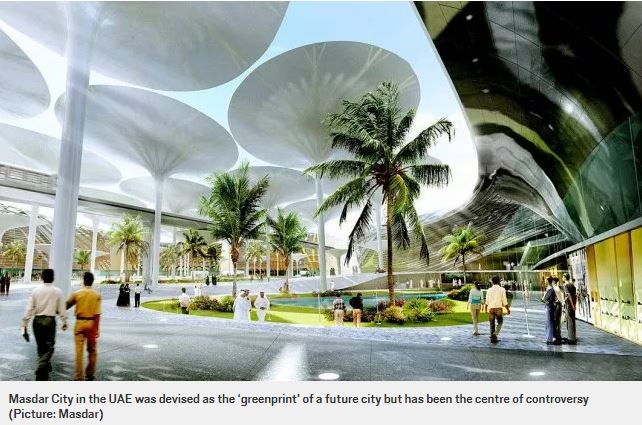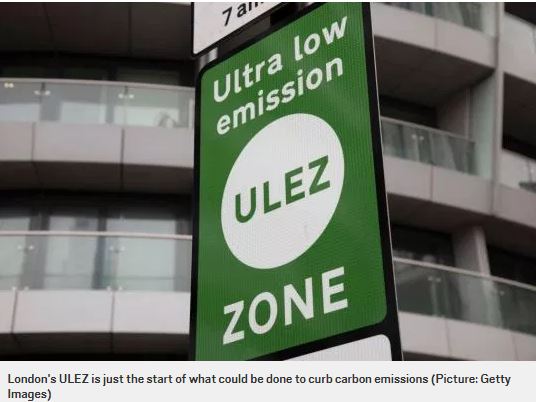A zero-emission city is now a choice, not a fantasy
| |
|||
| แหล่งที่มา : https://metro.co.uk |
วันที่โพสต์ : 6 พ.ค. 2562 | ||
| A zero-emission city is now a choice, not a fantasy | |||
 |
|||
 |
|||
| We live in a world that is getting hotter and ever more crowded, while the air that we breathe is dangerously contaminated. According to the World Health Organisation (WHO), nine out of 10 people now breathe polluted air and it kills around 7 million every year. No country in the G20 group of major world economies is on course to meet their climate change reduction targets. Countries are struggling to balance rapid industrialisation and economic progress with climate change and public health concerns.Twenty-two of the world’s 30 worst cities for air pollution are in India, with a further five in China. Closer to home, more than 40 towns and cities in the UK are at or have exceeded air pollution limits set by the WHO, including cities like London, Manchester and Swansea. President Trump’s withdrawal of the US from the Paris climate agreement makes tackling CO2 emissions harder. To compound this, according to the world’s leading climate scientists , there could be as little as a dozen years left for global temperature increases to be kept to a maximum of 1.5C. Even a half a degree increase to 2C will significantly increase the rise of floods, drought, extreme heat and poverty for hundreds of millions of people around the globe. Connections are already being drawn between the growth in migrants looking to cross the southern borders of Europe and US, with the impact of climate change on their homelands. But looking beyond the doom, gloom, and institutional malaise, reductions in emissions are not only necessary, but achievable. Even completely zero-emission cities are possible. Conventional policy thinking equates avoiding climate change with causing pain and disruption to the general population leading a lower standard of living – a vote-loser in other words. This is starkly illustrated by the demands of the Extinction Rebellion protest movement who, alongside other demands, are calling for net zero carbon dioxide emissions by 2025. However, some commentators, such as Mark Maslin, of UCL , have pointed out that a slightly slower timescale of 2029, combined with policy “carrots” and “sticks” would encourage the creation of emission reduction solutions. A ‘green new deal’ to replace gas boilers in millions of homes, for example, could be deployed in order to bring forward innovation while also reducing emissions – a win-win for the environment and society, rather than a win-lose. These advances in technology mean reducing emissions becoming a positive policy choice. However, there are trade-offs – sometimes in cost and convenience. And there needs to be a consistent approach designed to reduce emissions from all sources. One very important, albeit highly emotive, source is vehicles. London’s Ultra-low emissions zone – a step in the right direction Climate change, the drive to zero-carbon and the pending public health crisis from airborne particulates have driven a raft of regulation, leading to policy reaction. Take London’s Ultra-Low Emissions Zone (ULEZ) as an example. A traffic pollution charge scheme implemented in April 2019, with the aim of reducing the exhaust gas emissions 2019, ULEZ is an incredibly important step towards reducing local air pollution -and possibly decarbonising – the capital. ULEZ is based on Euro standards that set limits for polluting nitrogen oxides and particulate matter from car engines. It is estimated this will cover around 100,000 cars, vans, HGVs, and coaches every day. Newer vehicles on the market will need to demonstrate that they meet the standards required before they even roll off the forecourt. By discouraging heavy emitting vehicles from entering the zone, the scheme is predicted to see nitrogen oxide emissions fall by 45% in its first year of operation alone. ULEZ will then expand to cover a much larger part of London by October 2021, affecting millions of people. Meanwhile, the intense focus on cleaner air has resulted in London Mayor Sadiq Kahn confirming that, in central London, all double-decker buses will be powered by hybrid engines while all single-decker buses will be zero emissions by 2020. |
|||
 |
|||
| Looking further afield the ambition is for all 9,200 buses across London to be zero emissions by 2037 at the latest, while Mayor Kahn intends to make London a zero-carbon city by 2050. It’s certainly an improvement, but it doesn’t go nearly far enough. As individuals we know the problems and we can make a difference. Whether that is walking, cycling or taking the bus where possible, or switching off your idling engine at traffic lights, we can take active steps to reduce our emissions. However, a lot of travel is hard-wired into the way our towns and cities are built, where we work, study and play. Not taking journeys is unrealistic in most cases. And always pointing the finger at decisions made by others – government, town planners, vehicle manufactures or oil companies – isn’t acceptable either. To achieve the zero-emission goals we will need a combination of consumers changing their behaviour, governments implementing effective policy changes and businesses leading the way with technological advancements to active gains. Fuel Cell technology – the key to unlocking zero-emission cities UK decarbonisation policy tends not to look at the country’s energy needs as a whole; treating heating, power and transport separately rather than seeing it as one interconnected system. There are no silver bullets but a clear focus on the goal of creating clean and liveable places for everyone, even in old cities with complex infrastructures is essential. The key for cities such as London to achieve their zero-emission ambition lies in the adoption of highly sophisticated technology such as fuel cells. A low emission technology, fuel cells convert fuel, often hydrogen, to electricity and heat. They are an essential option in transitioning away from carbon fuels and encourage innovation. This will help drive economic growth and ultimately offer pollution-free energy. Authoritative reports – including a recent one by the Committee on Climate Change – show the potential. The costs of technologies such as renewable power generation, electrolysers and fuel cells and falling. This opens up the possibility of hydrogen becoming a practical and low cost means to decarbonise transport, heat and power and would render the arguments about hydrogen being ‘always tomorrow’s fuel’ obsolete. Other advanced economies are pushing forwards – Korea released an ambitious hydrogen and fuel cell roadmap at the end of 2018, while Japan updated its own targets in March. The 2020 Tokyo Olympic Games will showcase Japan’s vision of a hydrogen society, and Germany has the world’s first hydrogen-powered trains. The UK has a nationwide gas pipeline network going into people’s houses, and with the decarbonisation race now on, serious consideration is being given to hydrogen as a replacement fuel to natural gas in boilers. In the first UK trial of its kind, the HyDeploy project aims to add some hydrogen into an existing natural gas network to reduce CO2 emissions from home cooking and heating without altering the performance of customer appliances. The move to fuel cells looks especially timely with HGVs currently accounting for 17% of UK road transport greenhouse gas emissions, while the Government looks at new measures to ensure lower emission lorries pay less to use our roads. HGVs look set to be one of the swiftest adopters of fuel cell technology as battery power is less effective as weight and range increase. Zero emission cities of the future The technologies to deliver zero-emission cities are here and shouldn’t be more expensive to the consumer on the street. But transitioning is likely to be messy, costly and controversial. You only have to listen to a radio phone-in in London for five minutes to see how divisive schemes like ULEZ can be. And that’s before we even consider that 82% of the G20’s energy supply still comes from fossil fuels , while subsidies continue to rise across the sector. Encouragingly, policy, technology and business drivers are starting to move in step, though not always at the same speed. Masdar City, a planned city project in Abu Dhabi, says it is ‘developing a “greenprint” for sustainable cities of the future’ but this was abandoned . Its completion date has been pushed back to 2030 and instead of ‘zero carbon’, it’s promised ‘50% reduction’. Although a regulatory ‘stick’ was the trigger for Volkswagen’s massive investment in battery vehicles, the technology is only just reaching the level of maturity where the investment may make sense. In other regions and for other industries, hydrogen fuel cells have now reached that tipping point. In Korea, Germany and Japan companies have been set up to invest in hydrogen refuelling stations for fuel cell electric vehicles, and at the same time major investments are going into hydrogen provision. As the economic benefits become clear, expect other countries and other cities to get on board. However, this doesn’t mean the issue of climate change will be resolved and some areas of our economy and society will be harder to decarbonise than others. Aviation, shipping and heavy industry are examples of where we may struggle to use zero emissions technologies so – to be net negative globally – we may have to use negative emissions technologies to compensate. These include planting forests and carbon capture in conjunction with biomass-fired energy plants. So don’t be surprised to find in 30 years that you are waking up in a home heated solely by renewable energy sources, while you drive a hydrogen-fuelled car to an office powered by fuel cell technologies. Zero-emission cities may still be a choice. But, as Extinction Rebellion and other global protests show, it’s an obvious one. |
|||






